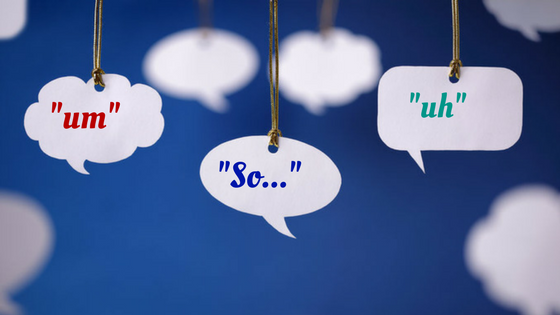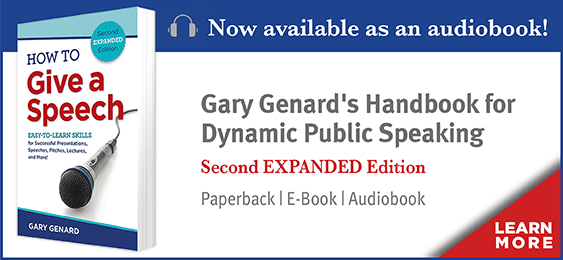
Want to stop saying 'uh' and 'um' when you speak? Here are three ways to eliminate vocal fillers and improve your communication skills.
Do you, like, want to, um, speak more effectively?
Many speakers ask themselves, "How do I stop saying uh and um?" These are the dreaded vocal fillers – those meaningless presentation padders we rely on between sentences (or mid-thought) to get us through to the next. These “um”s and other sounds give speakers a chance to rest. Done repeatedly, however, they're irritating to listeners and unnerving to the speaker.
Do you know the techniques of using your voice effectively in public speaking? Skillful speakers use their vocal performance to strengthen their clarity and credibility. Discover the approach that will help your voice come vibrantly alive for listeners! Download my essential cheat sheet, "5 Key Tools of Vocal Dynamics."
Chances are, though, you’re not “umming” as much as you fear you are. Fortunately, the perception of the problem is usually worse than reality. Your audience isn’t focusing on your fillers; they’re listening to what you say in search of something of interest to them. You, in turn, should focus on getting that message across and not on your vocal hiccups.
In the meantime, here are three methods for ridding yourself of vocal fillers (you know: the ones you probably don't use as much as you think you do):

Three Ways to Eliminate Vocal Fillers
1. Engage a tape recorder or video camera.
2. Embrace the pause
. You should know how to use pauses effectively in public speaking. Pauses are essential for letting listeners reflect on the important point you just made. They also help vary the pace of your speech. Listeners need a mental rest now and then, and pauses accomplish that. Perhaps the best thing about a pause is that it projects confidence–-pausing shows that you’re not rushing to get the whole painful ordeal over with.3. Enlist a friend.
Rehearse your speech in front of a friend. Ask him or her to let you know each time you use a vocal filler by raising a hand or tapping on the table. Each time you see or hear that cue, start your presentation over. If that doesn't kill the filler, nothing will.Another term for vocal filler is “vocalized pause.” Try saying the vocal portion (the “um” or “so”) to yourself instead than voicing it–-while keeping the pause. Remember, pauses during a presentation are a relief for all involved, like a sip of cool water on a really hot day.
Allowing your speech to flow this way will not only emphasize your effective communication skills. It will demonstrate that you can speak with confidence, and even improve your interpersonal skills.
You should follow me on Twitter here.



